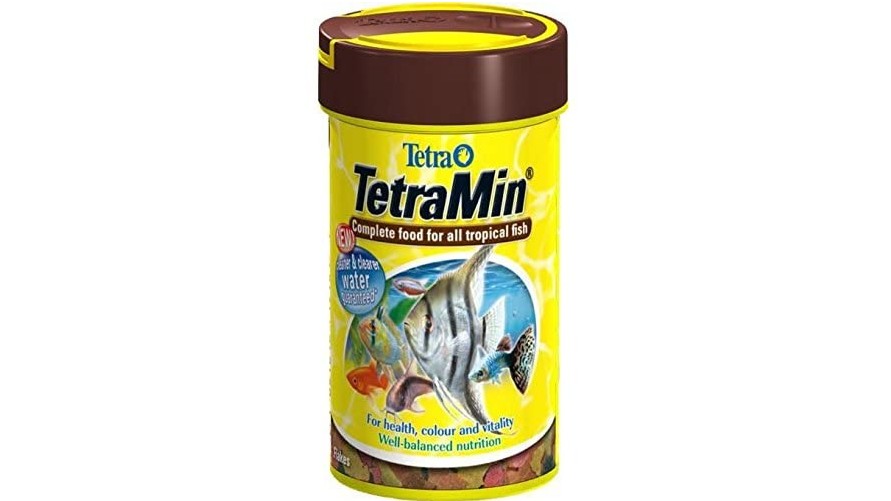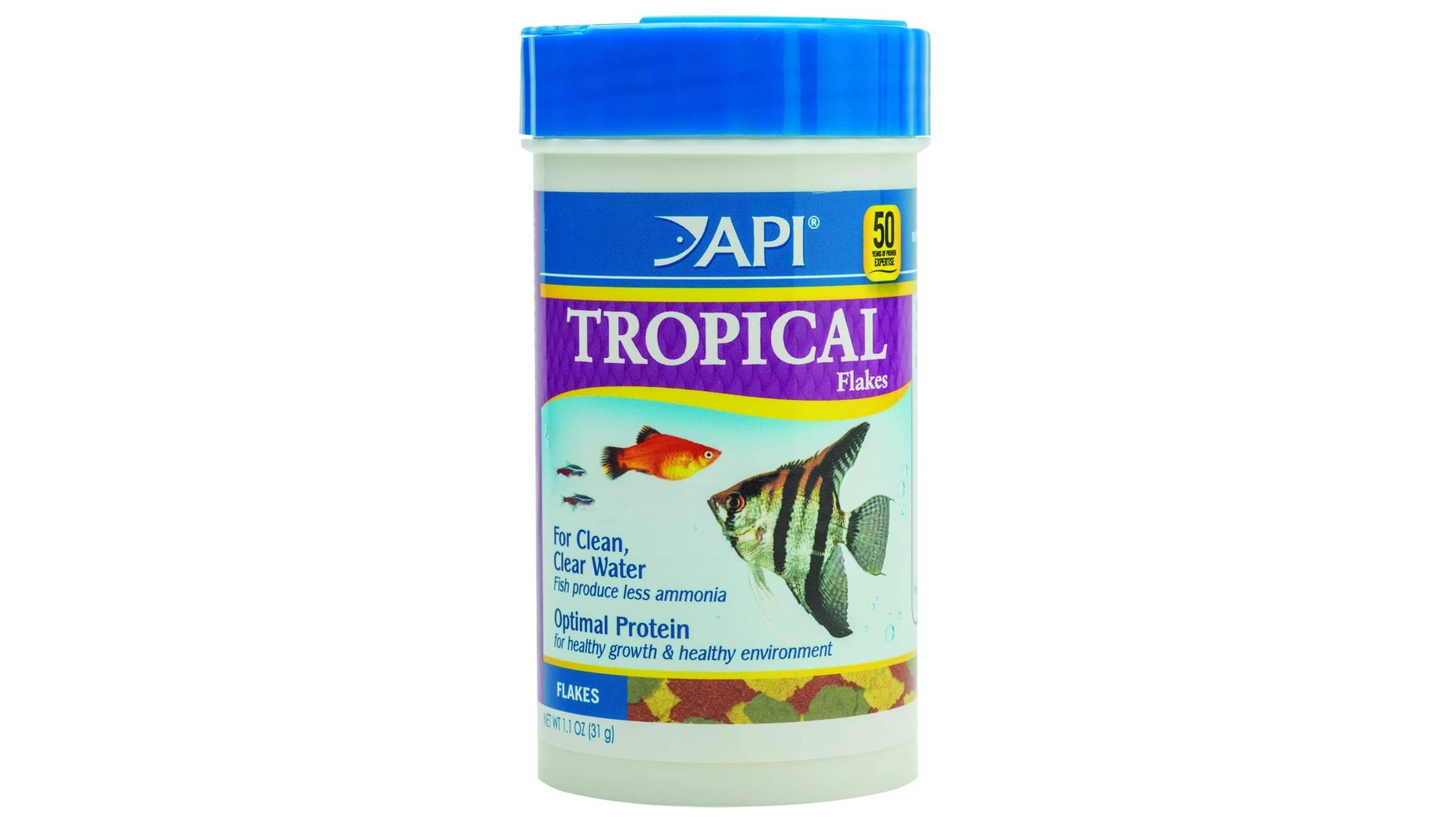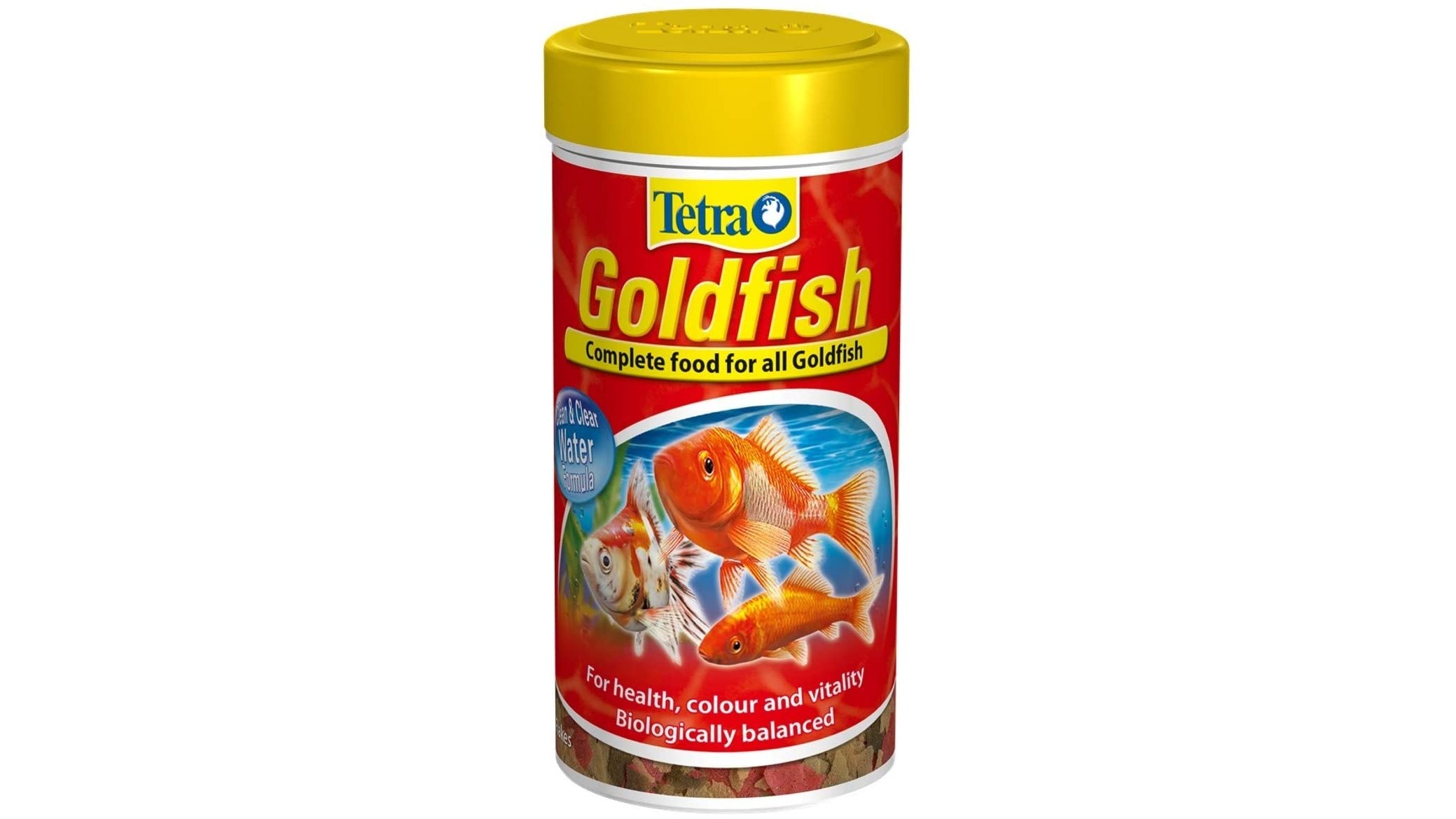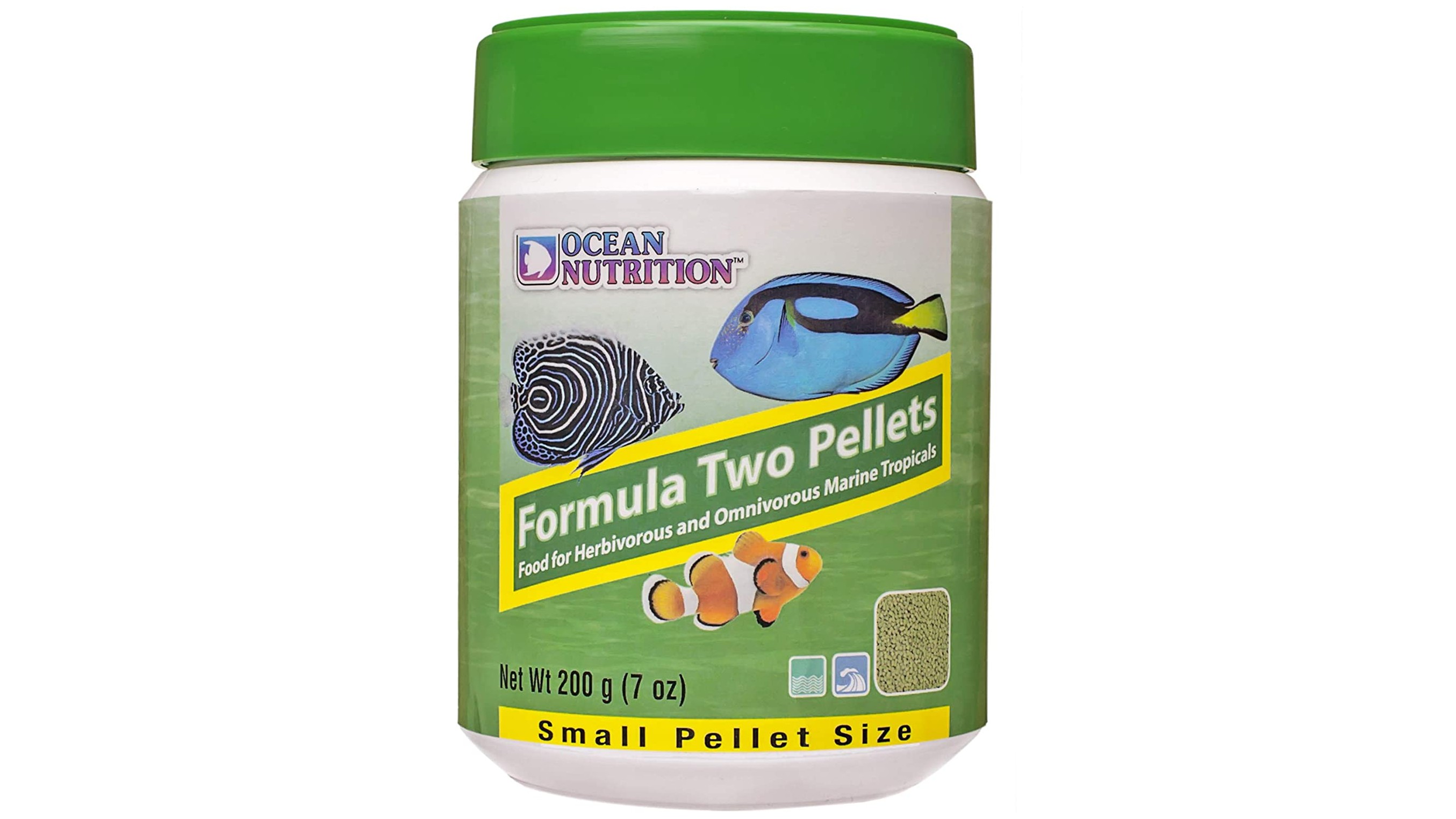Best fish food: The best diet for tank or pond fish
The best fish food for tropical, temperate and marine environments

The best fish food is likely at the top of your weekly shopping list if you share your home with several finned friends, but with more options than ever before, how do you know which food is the right one to be adding into your aquarium each day?
While investing in the best fish tank is one of the most important decisions you'll make, getting your finned friends diet right also needs to be a top priority to ensure they stay happy and healthy.
The first thing you need to know is whether the fish you have are omnivores, carnivores or herbivores so that you can feed them correctly. Once you've ascertained that, you can decide between dry food, freeze-dried, frozen, fresh or live.
For a lot of people, dry fish food is the most convenient, both from a storage and feeding point of view. Dry options include flakes, pellets, and sticks, and the advantage of these is that they tend to last for a long time, so you don't need to worry about them going off. Look for options that are high in fiber to avoid your fishy friends becoming constipated.
Fish that are carnivores will likely enjoy freeze-dried or frozen worms and shrimp, and if your favorite swimmers are herbivores, you can add variety alongside their dry food by popping lettuce, spinach and cucumber into their tank.
The most important thing to remember is that one food won't be suitable for all fish, so if you have a variety of fish in your tank, you'll want to use a combination of food to make sure all of your finned friends are getting what they need.
Below you'll find our picks of the best fish food. When you've finished browsing the selection on offer here, take a look at our guide to the best fish tank stands for storage and display solutions.

TetraMin Nutritionally Balanced Tropical Flakes: Best overall fish food
Specifications
Reasons to buy
Reasons to avoid
Utterly ubiquitous on the fish food shelves, Tetra’s bright packaging and outstanding fish photography certainly stand out. These tropical flakes are suitable for a mixed community tank, floating on the surface before gradually sinking so both top and middle feeders can have a chance to feed. Bottom feeders, however, may be out of luck as the flakes often disintegrate before they’ve had a chance to eat their fill.
This quick melting away into the water is Tetra’s trump card - the flakes won’t clog up your filter or cloud your water as long as you don’t over-feed. Presented as a mixture of seven different flakes, there’s something for almost all fish here, with fish and shrimp meal, rice, soybeans, potatoes, and oats foremost among its ingredients. There’s a lot of protein on offer here (47%), balanced with fats and carbs. Tetra also includes probiotics and minerals in its fish food to support a healthy immune system among your fish.
Feeding a complete fish food such as TetraMin can help to enhance the colors and behavior of your fish, as healthy males are more likely to enter breeding coloration when their nutritional needs are met. TetraMin’s high-protein formulation is perfect for carnivorous species, but consider supplementing it with vegetables such as peas or broccoli if you have herbivorous species. Frozen or freeze-dried foods such as shrimp can also be used as a supplement if you feel the flakes are not providing enough protein.

API Tropical Flakes: Best value tropical fish food
Specifications
Reasons to buy
Reasons to avoid
Frequently available for significantly less than the equivalent Tetra package, API offers a similarly high-protein mix of nutrients which are suitable for a range of common community species, with anecdotal evidence suggesting bettas particularly like them.
The recipe is a high-protein one, with dried seaweed and banana flour included further down the list. There’s a decent mixture of vitamins and minerals included too, along with a claim that the flakes produce less ammonia when digested and therefore contribute toward a cleaner tank. Carotenoids help to enhance fish color, while the mix of proteins helps them to grow.
There are a few things to watch out for, however: The presence of copper sulphate in the flakes can be bad news for certain aquarium inhabitants, such as snails, so avoid if you’ve got copper-sensitive creatures in your care. Then there are scattered reports of bad smells, and of the flakes clumping together. We’re obviously unable to open and test every canister out there, so we hope this is an isolated problem.
Bottom feeders stand more of a chance of getting a decent meal if you use these flakes, as they don’t dissolve in the water quite so quickly as the Tetra equivalent. API’s fish food seems popular with tank residents at all levels, however, and when supplemented with treats tailored to the species you keep, will make a good everyday basic food for tropical fish.

3. TetraFin: Best for goldfish
Reasons to buy
Reasons to avoid
Goldfish flakes differ in their nutritional makeup from tropical ones, as the needs of fish adapted to cooler waters are different from their warmer water brethren. TetraFin is aimed at goldfish but is suitable for many species of room-temperature fish from across Asia. You can also use it to feed outdoor fish, particularly in the run-up to their winter dormancy, if pelleted food proves too large for them.
With slightly less protein and more fat than the tropical TetraMin, TetraFin contains a rich mix of vitamins and minerals and is easy for your fish to digest, leading to less clouding of the water - although goldfish are naturally messy fish, and regular water changes will still be required. Beta-carotene helps enhance the color of your fish, while the presence of omega-3 fatty acids helps keep them alert and energetic.
TertaFin flakes don’t dissolve as easily as others, tending to float for a while before slowly descending and lingering on the bottom, which makes them ideal for all members of the community, including bottom feeders. The Tetra range includes Sinking Goldfish Granules that can be fed as a supplement, giving them variety in their diet and, through the addition of algae in the food, further helping to bring out their naturally beautiful colors.

Ocean Nutrition Formula Two Marine Pellet: Best for marine tanks
Reasons to buy
Reasons to avoid
Marine fishkeeping is a bizarre mix of enjoyment, stress, and chemistry, but when you get it right there’s nothing quite so satisfying as watching your simulated marine biome in action. A good fish food will help promote this satisfaction, as you watch your fish (and perhaps crustaceans or echinoderms too) grow, change, and become extra colorful.
Ocean Nutrition’s Formula Two is an excellent food for omnivorous and herbivorous marine fish (despite the fact it’s made from other fish, they don’t mind) and is available as flakes or pellets. You can use it in a herbivorous freshwater tank too, which is useful if you keep both types. While Ocean’s Formula One flakes are a bit more of an all-rounder, these Formula Two pellets give your fish an increased environmental richness as they tussle and bite at the larger food much as they would in the wild. The pellets do, however, sink quite fast, allowing fish to chase them for a bit but ending up on the bottom rather quickly where they are picked over by shrimp and other bottom feeders.
The pellets are presented in oxygen-free packaging, and feel moist and fresh. Package size may be a bit on the big side, but the pellets keep well and, when mixed with other supplemental foods, should last a long time.

5. Hikari Micro Wafers: Best for cichlids and livebearers
Reasons to buy
Reasons to avoid
Aimed at tetras, catfish, cichlids, and livebearers, but suitable for just about any species of tropical fish, these micro wafers are broad but light, designed to sink slowly through the water. You’ll also want to investigate wafers if you’re keeping plecos and other algae-eating bottom feeders. While Tetra tends to dominate fish foods such as flakes and pellets, Hikari was the originator of the wafer-style food, and remains on of its most reliable manufacturers.
Once they’ve settled, the wafers linger for a while before breaking up, so it’s important not to feed too many as they may cloud your water. Enriched with algae and vitamin C, you should see a decrease in stress and an improvement in fish color, as long as the other environmental variables are under control.
With a larger percentage of vegetable matter than other types of food, these wafers are recommended for herbivorous fish, but can be fed to a wider community as there’s still plenty of protein on offer. The large bag they come in looks like a bargain, but when they hang around for a while, and especially if moisture is allowed in, then an unpleasant smell may begin to seep out. It’s worth keeping them in an extra layer of plastic just for that reason.
How to choose the best fish food
Why you can trust PetsRadar
Fish benefit from, and respond to, their environment being tailored to them, and getting the food right is as important as hitting the lighting, pH, and temperature targets. Research any new species of fish you’re thinking of adding to your community tank to see what its nutritional needs are before you buy it - there’s nothing worse than a new arrival moping around the tank looking hungry while you desperately try to find something that will pique its appetite. At the same time, be sure not to over-feed your fish. Not only can this impact their bodily health, it can cause a rise in bacteria levels in your tank. Wondering “why is my fish tank cloudy?” Over-feeding could a factor.
Some fish like to chase their food, in which case slower-sinking pellets or wafers could be the answer. Others respond to flake food, darting to catch it as it is washed around the tank in the flow from filtration. Bottom feeders will nibble on anything that comes within range, some launching themselves up in the water in a spectacular display if something catches their eye.
Once you’ve checked the nutritional content and type of fish food you’re going to supply, consider the extras that are included - extra fish oils and vitamins, especially foods rich in algae, will enhance the natural colors of your fish. Aquarium lighting has a large role to play here too, so don’t expect miracles from a change of food. Despite the jokes made about their memory, many fish are culinary conservatives, and will ignore or spit out new food that isn’t what they’re used to. The exception to this are supplements such as live worms, freeze-dried shrimp, or fresh vegetables, which many fish devour with apparent delight. Getting to know your fish is the key to delivering optimum nutrition, but a good general-purpose flake food is a good place to start.
Get the best advice, tips and top tech for your beloved Pets
